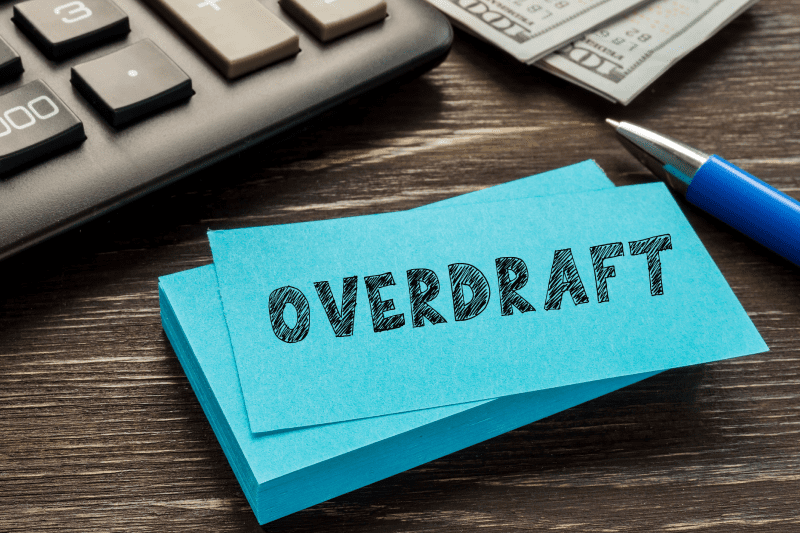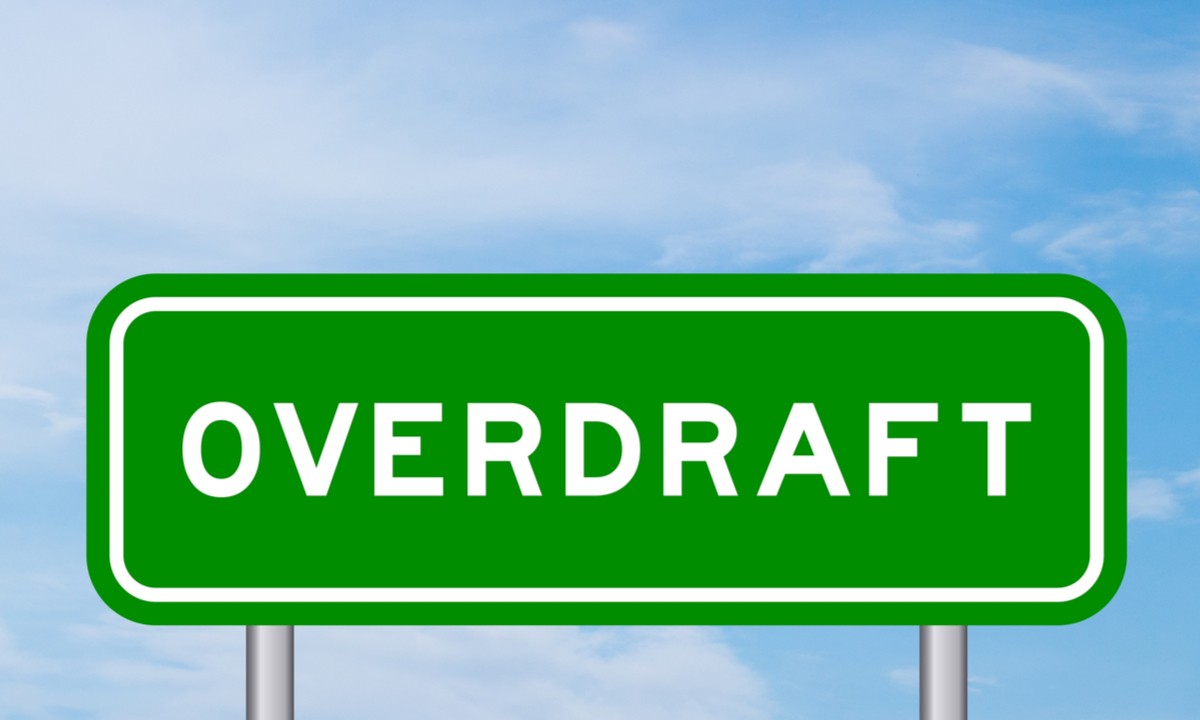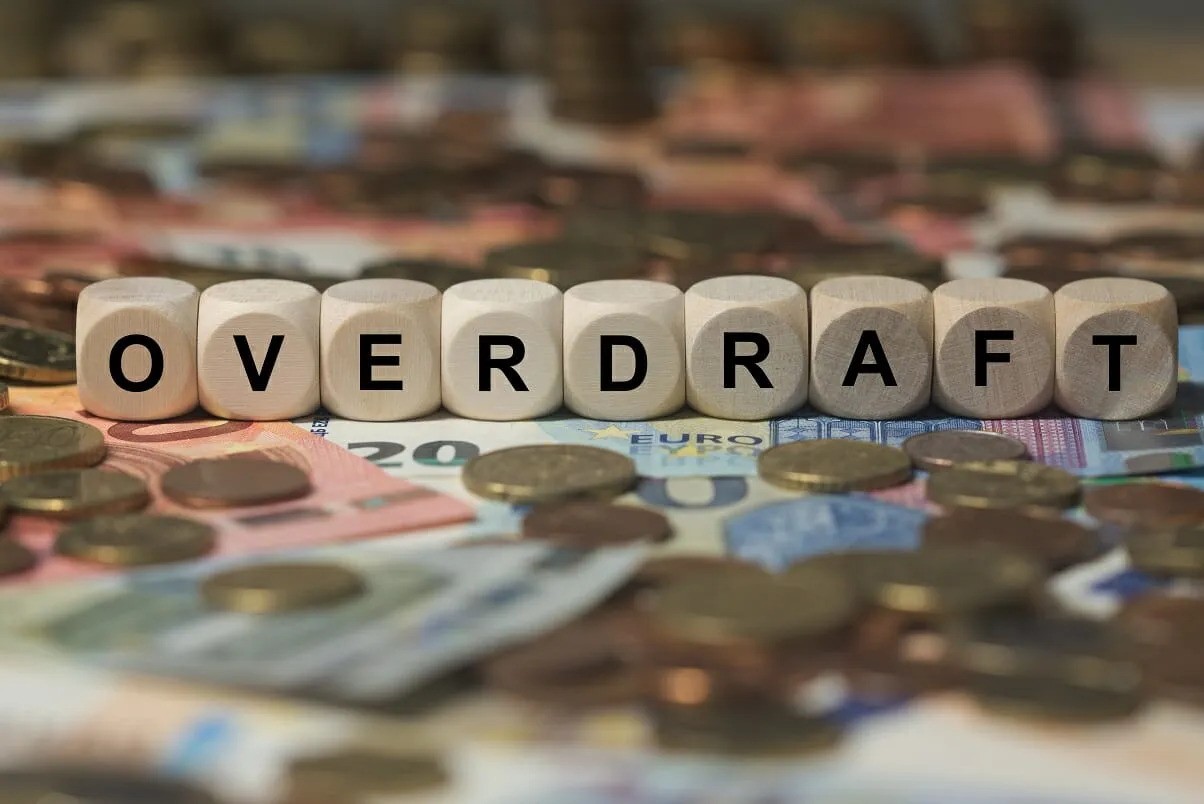Overdraft Policies - What It Means And How It Works
In this article, we will delve into a financial tool that plays a significant role in the banking landscape - overdraft policies. By demystifying what it means and how it works, we aim to equip you with the knowledge needed to navigate your financial waters with confidence.
Author:Camilo WoodReviewer:Emmanuella SheaJan 05, 2024916 Shares83.2K Views

Understanding your finances is crucial in managing your money wisely. One aspect that often perplexes individuals is the realm of banking, particularly when it comes to handling unexpected expenses.
In this article, we will delve into a financial tool that plays a significant role in the banking landscape - overdraft policies. By demystifying what it means and how it works, we aim to equip you with the knowledge needed to navigate your financial waters with confidence.
What Is An Overdraft?
An overdraft occurs when a bank permits a transaction or withdrawal from an account, even when there are insufficient funds to cover it. In essence, it acts as a credit extension that the financial institution grants when an account balance reaches zero. This facility enables account holders to continue withdrawing funds despite the absence or inadequacy of funds in the account.
In simple terms, an overdraft implies that the bank allows customers to borrow a predetermined sum of money. This borrowed amount incurs interest, and there is usually a fee associated with each overdraft occurrence. Many banks charge overdraft fees that can amount to over $35.
Understanding Overdrafts Policies
Understanding overdraft policies is important for people who are responsible with their money because it has a direct effect on their security and well-being. To begin, people can avoid sudden and expensive fees by learning about overdraft policies. A lot of banks charge big fees for overdrawing an account, and these fees add up fast.
People can take steps to avoid overdrawing their accounts and paying unnecessary fees by learning the terms and conditions of overdraft policies. This will help them keep their hard-earned money.
Second, knowing about overdraft rules helps people make smart choices about how they spend and manage their money. People who have a bank account can better plan their spending when they know the exact boundaries and limits set by their bank.
People who are aware of this can make smart budgets and avoid scenarios where they might accidentally spend more than their account balance. People can stay in charge of their money, lower their risk of overdrafts, and build a more secure financial future by making smart decisions.
Also, having a good knowledge of overdraft policies makes it easier for account holders to talk to their banks. People can have open and honest conversations with their banks about overdraft protection choices or other options if they are aware of the possibility of overdrafts.
This kind of contact can lead to deals that are good for both parties, like setting up alerts or linking accounts to avoid going overdrawn. Opening up this line of communication makes the relationship between account holders and financial companies more open and helpful.
Common Causes Of Overdraft
Overdrafts can happen for several common reasons, most of the time because of bad money management or unplanned events. One common reason is that people spend more than they have in their accounts.
This can happen if you spend too much, don't keep track of your transactions, or don't think about how much ongoing costs will affect you. People with low amounts are more likely to overdraw their accounts, which can cost them money and put them in a bad financial situation.
Overdrafts can also happen when payments and withdrawals happen at different times. Overdrafts can happen when people have transactions or bills that are due to be taken out of their accounts before they expect to get paid or have deposits refunded.
It can be hard to keep a positive balance when your income streams aren't regular and your schedules aren't coordinated. That's why people need to make sure their financial responsibilities are in line with their income cycles.
Overdrafts can also happen when people aren't aware of pending deals and automatic payments. A lot of people forget to set up automatic bill payments, contract renewals, or scheduled debits, which can cause their account balances to drop without warning.
This mistake can lead to overdrafts and the fees that come with them. This cause of overdrafts can be lessened by knowing about upcoming purchases, setting reminders, and checking account statements often.
Lastly, people can get into overdraft situations when they have unplanned financial emergencies or costs. Unexpected costs like medical bills, car repairs, or other costs can quickly wipe out account balances, taking people off guard.
Types Of Overdrafts
There are two primary types of overdrafts: secured and unsecured. A mortgaged asset or other form of collateral serves as the security for the loan in a secured overdraft.
If the account holder fails to settle the outstanding amount, the bank retains the right to recover losses by selling the collateral. On the contrary, unsecured overdrafts lack collateral and consequently come with a lower credit limit.
Several common types of overdrafts are available to account holders:
- Overdraft against salary -Borrowers with salary accounts at lending banks may qualify for an overdraft limit of two to three times their salary amount.
- Overdraft on savings account -This facility is offered to clients with active savings accounts and frequent transactions.
- Overdraft against equity -By using equity as collateral, borrowers can secure this facility, although the permitted limit is generally less than the market value of the stocks.
- Overdraft against house -Homeowners have the option to overdraw up to 40-50% of their house's value.
- Overdraft against fixed deposit -Account holders can overdraw up to a certain percentage of a fixed deposit, typically with an interest rate approximately 2% higher than the Fixed Deposit's return on investment.
- Overdraft against insurance policy -Depending on the surrender value of an insurance policy, account holders can also avail of this facility.
What Is An Overdraft Protection?
Overdraft protection is an elective service designed to prevent the rejection of charges, such as checks, ATM transactions, and debit-card charges, that exceed the available funds in a bank account. Commonly referred to as cash-reserve checking, this service acts as a safety net for checking accounts but can also be extended to include savings accounts.
When enrolled in overdraft protection, the bank ensures that transactions proceed even if the account balance is insufficient. Customers opting for overdraft protection specify a secondary account - typically a linked savings account, credit card, or line of credit - that the bank taps into to cover any overdrafts. However, the convenience of this service comes at a cost, and banks may charge customers in various ways, such as by implementing overdraft fees for processing transactions that exceed the account balance.
How Does Overdraft Protection Work?
Banks typically provide various types of overdraft protection, each with its own set of features. Here are more details about the main types of overdraft protection that financial institutions typically provide:
Overdraft Protection Transfers
This option allows you to link a savings account, a money market account, or a secondary checking account to your main checking account. If your checking account is overdrawn, the bank will automatically transfer funds from the linked account to cover the transaction. While many banks offer this service for free, some may charge a fee.
Overdraft Lines Of Credit
Functioning similarly to a credit card, an overdraft line of credit is accessed when your account lacks sufficient funds for a transaction. The bank taps into this line of credit to cover the remaining amount.
However, these credit lines often come with high annual interest rates, divided into smaller monthly charges until the overdraft is repaid. Using a line of credit for overdrafts can become costly over time.
Grace Periods
Certain financial institutions provide grace periods instead of immediately charging an overdraft fee. During this period, typically one or two days, you have the opportunity to restore a positive balance to your account. If the account remains overdrawn beyond the grace period, the bank will assess fees on transactions that led to the overdraft.
Other Coverage Programs
Some banks adopt innovative approaches to overdraft protection. Some institutions offer a free line of credit with an extended grace period, giving customers more time to bring their accounts to a positive balance.
Example Of Overdraft Protection
Banks have two primary options for covering overdrafts: using their funds or linking the overdraft to a credit card. When a bank uses its funds to address an overdraft, it typically does not impact your credit score.
On the other hand, if a credit card is employed for overdraft protection, there is a possibility of accruing debt that could potentially affect your credit score. It's important to note that while the use of a credit card for overdrafts may impact your overall debt, it does not directly reflect an issue with overdrafts on your checking accounts.
Failure to repay overdrafts within a specified timeframe may lead the bank to enlist a collection agency for account recovery. This collection action has the potential to influence your credit score and can be reported to major credit agencies such as Equifax, Experian, and TransUnion. The impact on your credit score depends on how the overdraft account is reported to these agencies, varying in severity based on the circumstances surrounding the overdraft on your checking account.
Ways To Avoid Overdraft Fees
Experiencing overdrafts is a common situation, but here are some suggestions to help you steer clear of overdraft fees:
Set Up Low Balance Alerts
Many banks provide alert features that notify you through text, email, or push notifications when your account balance drops below a specified threshold. These alerts serve as a proactive reminder, allowing you to monitor your balance closely. This way, you can either add more funds to your account or adjust your spending to prevent overdrafts.
Opt-Out Of Overdraft Coverage
If your bank's overdraft protection options involve fees, consider opting out of overdraft coverage. By doing so, your bank will decline any transactions that could lead to a negative balance. While this choice may limit your ability to make important purchases during emergencies, it can help you avoid overdraft fees.
Explore Banks With Generous Overdraft Policies
Banks vary in their overdraft fee structures, and many are now reducing or eliminating these fees. If overdrafts are a concern for you, consider researching and comparing different banks to find one with a more favorable overdraft policy.
Consider A Prepaid Debit Card
Prepaid debit cards function similarly to gift cards; you load a specific amount onto the card, and once that balance is depleted, you can add more funds. Since prepaid debit cards can't be overdrawn, they offer a preventive measure against overdrafts, ensuring that you only spend what is available on the card.
Special Considerations Of Overdraft Protection
Lines of credit offered for overdraft protection come with varying limits, ranging from $250 to $5,000 and beyond. Utilizing these credit lines incurs interest charges and transaction fees, impacting the overall cost for customers.
When a credit card is designated as the backup account, the amount treated as a cash advance can result in an expensive form of overdraft protection. Unlike regular credit card transactions, cash advances lack a grace period and are subject to high-interest rates and fees, typically a flat fee of $10 or 5% of the advance amount - whichever is greater.
Opting for a linked savings account as a backup account tends to be a more cost-effective choice for overdraft protection. However, it's essential to ensure that the linked savings account maintains a sufficient balance to cover any shortfalls in the primary account, providing a balance between cost-effectiveness and financial security.
Trend In Overdraft Protection
Overdraft fees have consistently been a source of controversy within the banking industry. The average overdraft fee has dropped to a 13-year low, standing at $29.80, according to a BankRate.com survey of 245 banks and thrifts in 25 significant U.S. markets. This marks an 11% decrease from the previous year's record high of $33.58.
The momentum toward eliminating overdraft fees gained significant traction in the aftermath of the 2020 pandemic. The public debate surrounding this issue intensified, prompting discussions at the U.S. Senate, where hearings focused on the rationale behind banks charging fees for insufficient funds. Bank CEOs faced criticism for their reluctance to suspend overdraft fees during the challenging circumstances of the pandemic.
This trend toward fee reduction or elimination extended beyond major banks. A 2022 report from American Banker highlighted that even credit unions, influenced by regulatory pressures and competition from digital banks, felt compelled to reconsider their approach to overdraft fees. The evolving landscape suggests a broader industry shift in response to public scrutiny and changing consumer expectations.
Overdraft Policies - FAQ
What Category Is Bank Overdraft?
A bank overdraft is considered a liability because it is an excess amount of money that is withdrawn from an account as compared to the amount deposited and that results in a negative account balance. The amount taken as an overdraft needs to be repaid by the business, hence, it is considered as a liability.
Is Overdraft A Type Of Borrowing?
An overdraft lets you borrow money through your current account by taking out more money than you have in the account – in other words you go “overdrawn”. There's usually a charge for this. You can ask your bank for an overdraft - or they might just give you one - but don't forget that an overdraft is a type of loan.
How Much Is Overdraft Limit?
An overdraft limit is the maximum amount that banks allow you to withdraw. For example, you might have a bank account balance of $5,000 with an overdraft limit of $500. It means that you can spend up to $5,500, but you can't withdraw or request for an added money if the payment exceeds the limit.
Conclusion
A grasp of overdraft policies empowers you to make informed decisions about your finances. By knowing the ins and outs of how overdrafts function, you can steer clear of unnecessary fees and pitfalls.
Remember, financial literacy is a key ingredient in securing your financial well-being. So, whether you're a seasoned banking customer or just starting to dip your toes into the waters of personal finance, understanding overdraft policies is a vital step toward financial stability.
Jump to
What Is An Overdraft?
Understanding Overdrafts Policies
Common Causes Of Overdraft
Types Of Overdrafts
What Is An Overdraft Protection?
How Does Overdraft Protection Work?
Example Of Overdraft Protection
Ways To Avoid Overdraft Fees
Special Considerations Of Overdraft Protection
Trend In Overdraft Protection
Overdraft Policies - FAQ
Conclusion

Camilo Wood
Author

Emmanuella Shea
Reviewer
Latest Articles
Popular Articles

